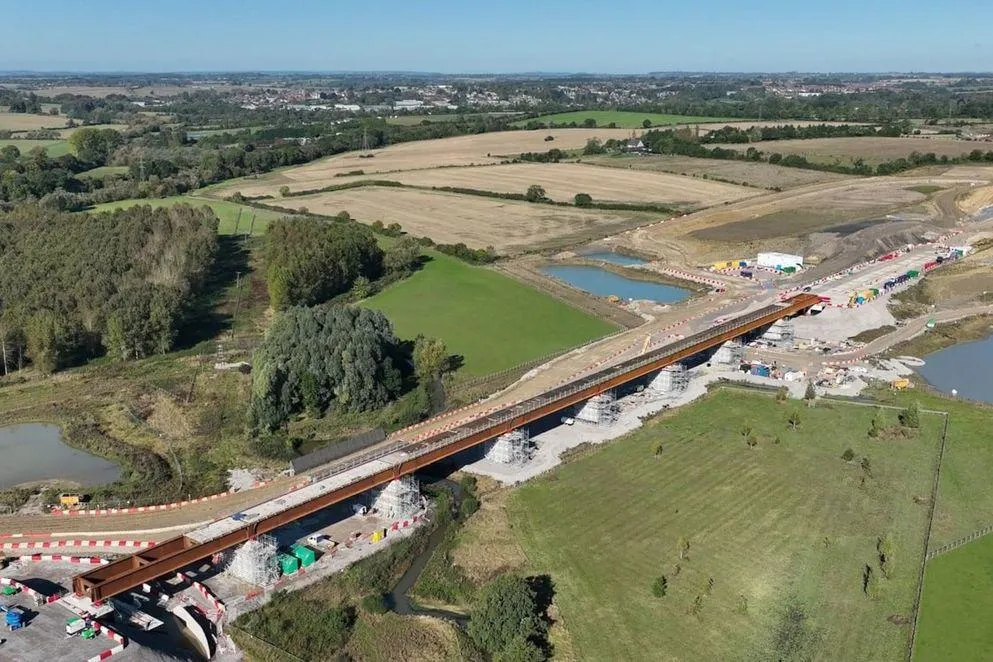
HS2 engineers have marked a significant milestone in the construction of two large viaducts designed to carry the high-speed railway across a floodplain near Brackley.
The achievements include the successful completion of a 2,695-tonne deck slide for the Westbury viaduct, along with the construction of the abutments for the nearby Turweston viaduct. These twin viaducts, set low in the landscape to the east of Brackley, span the floodplain of the River Great Ouse, which flows beneath the new railway twice as it winds through Buckinghamshire and West Northants.
Situated three miles apart and built using similar designs, both structures employ an innovative ‘double composite’ technique. This method features layers of reinforced concrete both above and below the steel beams, creating a highly efficient box-beam structure that uses less carbon-intensive materials than traditional designs.
The 320-meter-long deck of the Westbury viaduct was assembled in three sections, measuring between 84 meters and 135 meters. Each section was pushed out from the north abutment, with the next segment attached behind it. This meticulous six-month process resulted in the deck’s weight increasing from 1,145 tonnes at the start in March to 2,695 tonnes upon reaching the south abutment last week.
To reduce friction during the slide, special Teflon-covered pads—similar to those found on non-stick frying pans—were used on the temporary steel bearings atop each concrete pier.
Engineers also celebrated progress at the Turweston viaduct with the completion of its two abutments, which will support the 80-meter structure. The next step involves assembling the deck girders in preparation for launching the 591-tonne deck early next year.
Elizabeth Longinotti, HS2 Ltd’s Senior Project Manager, commented, “Watching the enormous deck at Westbury come together over the past year has been remarkable. I want to thank everyone involved in this achievement and look forward to similar progress at Turweston in the coming months. The innovative double composite design has significant potential to reduce carbon in construction, and I hope we can apply the lessons learned to future projects across the UK.”
Both viaducts are being constructed by HS2 Ltd’s main works contractor, EKFB, a collaborative effort among Eiffage, Kier, Ferrovial Construction, and BAM Nuttall. Eiffage Metal is leading the manufacture and installation of the beams.
With the steelwork now positioned at Westbury, engineers will start the intricate process of lowering the deck by 60 centimeters onto permanent bearings that will support its full weight. This two-month operation will involve carefully lowering the steelwork above each pier by 20 centimeters at a time until the entire 320-meter deck settles into its final position.
Tony Wehby, EKFB’s Project Director for the Twyford to Greatworth area, expressed pride in the team’s dedication: “This double milestone reflects our commitment to engineering excellence and our focus on reducing carbon emissions in construction. The innovative ‘double composite’ design showcases the skill and perseverance of everyone involved, and I look forward to continued progress on the Turweston viaduct.”
In recent months, significant advancements have also been made at HS2’s other major viaducts, including key structures forming the Delta Junction in North Warwickshire and those leading into Birmingham Curzon Street.
HS2 is undertaking the construction of over 500 bridging structures, ranging from small road bridges to the record-breaking Colne Valley Viaduct, which became the longest railway bridge in the UK earlier this year.




